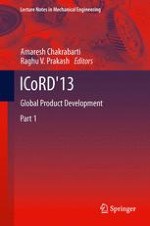2013 | OriginalPaper | Buchkapitel
Extracting Product Characters Which Communicate Eco-Efficiency: Application of Product Semantics to Design Intrinsic Features of Eco-Efficient Home Appliances
Aktivieren Sie unsere intelligente Suche, um passende Fachinhalte oder Patente zu finden.
Wählen Sie Textabschnitte aus um mit Künstlicher Intelligenz passenden Patente zu finden. powered by
Markieren Sie Textabschnitte, um KI-gestützt weitere passende Inhalte zu finden. powered by
